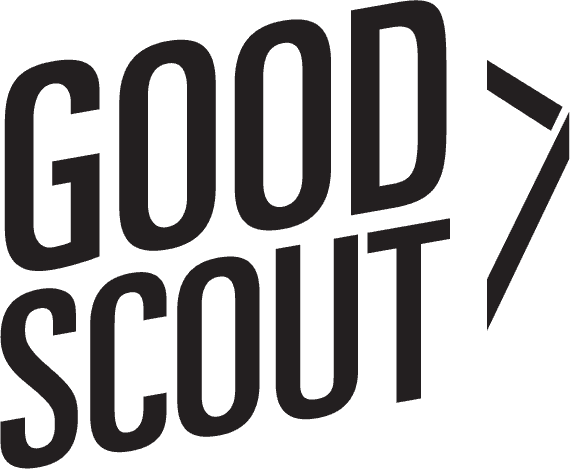Stuck in a loop? You’re not alone. It’s easy to get swept up in the day-to-day, sometimes focusing more on keeping up than truly advancing. This cycle can leave nonprofit boards and leaders treading water, facing the same challenges repeatedly without making the desired progress.
We asked two seasoned experts to each pinpoint a key thematic area that would significantly enhance the impact of organizations in the nonprofit sector—one focusing on guidance for boards and the other for organizational leaders.
Joining forces in this discussion are Good Scout President and Managing Partner Charisse Brown Marcus, alongside Andy Davis, a nonprofit board consultant and Vice President of Education and Capacity Building for the Georgetown Health Foundation.
Both contributors have chosen focal points that reflect what is most needed today in nonprofits: for boards to embrace a more action-oriented approach and for leaders to cultivate an environment of radical honesty. These perspectives underline a mutual belief in the power of direct engagement and transparency to drive organizational growth and impact.

Prioritizing Action-Oriented Board Engagement
Nonprofit boards play a key role in an organization’s decision-making. But as protectors of the institution, their position is inherently more conservative. This can lead to stagnation under the guise of thoughtfulness as board members prioritize analysis and ideation over action.
“We’re so caught up in the planning and the minutiae of what could go wrong, that we have stopped taking action,” Davis explained.
Undoubtedly, some of this caution is in response to a public that is increasingly critical of the organizations that focus on the causes they care about. But, Davis argues that without a willingness to take risks, organizations are causing more damage than good.
“Boards and nonprofit organizations, particularly in a heightened environment of awareness where mistakes can be costly, may become reticent to do what is best for the people they purport to serve because of the perceived risks,” he said. “But if we’re not willing to put ourselves and our reputation out there and try to do the most good, then often we can harm the people that we care about.”
Focusing on organizational integrity through board action is paramount, but it is only one aspect of a board’s role. Ensuring the board is focused on the purpose it exists to serve, and not only the organization itself may initially feel like throwing caution to the wind. But for board members unsure of where to start, the answer lies with the staff.
“Staff typically are not only more connected to the people that they are serving, they are often more reflective of the population that they’re serving, and therefore have more proximity to the issues your organization is focused on in so many ways,” expressed Davis.
Utilize your staff’s knowledge and understanding of the stakeholders in your community to find the pain points of your programming, and identify where improvements can be made. As you enhance communication between the board and the staff, you’ll likely find that you don’t need to dig deep to find areas that need particular support.
With the right resources and an infrastructure that bolsters the efforts of your staff, you may see progress begin to increase pace much more efficiently than you anticipated.

Embracing Radical Honesty in Nonprofit Leadership
For nonprofit leadership, organizational integrity takes shape by letting go of preconceived ideas and being willing to embrace change for the success of the organization.
“It may be clinging to a favorite program idea or adhering to a leadership style that, despite its drawbacks, you overlook. By becoming too attached to these preferences, you might fail to recognize how they could actually be holding your organization back,” Brown Marcus explained.
Leaders who have been in their role for an extended period can struggle with this aspect especially. Often, it can feel like the best path forward is the well-trodden one, but this doesn’t leave much room for innovation or adaptation to changes in your industry. A lack of clarity in this area can often obstruct the organization’s momentum, reducing funding, minimizing program success, and lessening staff satisfaction.
“Internal pride can be a significant obstacle for long standing organizations, but it’s time to push through that discomfort to get to action,” Brown Marcus said.
How do you accomplish this? The best way to reveal unseen obstacles is by opening the door to criticism. What management styles, programs, tools, or communication pathways have become the hill you’re willing to die on? What would happen if you introduced flexibility, making room for change in a space where there hasn’t been any before?
Staff are, again, some of the best resources for identifying where gaps exist. Brown Marcus recommends starting with open and honest inquiries among upper management and branching out from there. Not only are they the most well-connected to the people you serve, but they’re also the most affected by inadequacies in your organizational infrastructure. Asking for feedback can be a great starting point for identifying where your leadership team needs to loosen the reins.
“It is through honest conversation that you’ll find the best path forward,” Brown Marcus explained. “Leaning into that and testing it is the only way you’ll move the needle.”
Uniting Action with Honesty for Greater Impact
More often than not, it’s the unintended consequences of well-meaning preservation and complacency within boards and leadership that hinder progress in the nonprofit sector, rather than external challenges. So, what’s next?
It’s about turning these insights into actions. For boards, it means shifting from passive governance to being actively involved in charting the organization’s course. For leaders, it involves cutting through the noise to foster a culture where truth paves the way for breakthroughs.
Improving isn’t just about doing good; it’s about becoming better in our mission-driven work.
Good Scout Group is here to guide your organization through pivotal shifts, helping you to navigate the complexities of today’s landscape with confidence and clarity. Contact our team to learn more.
